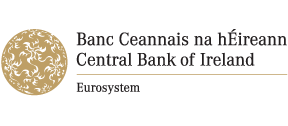The discussion around transparency rules has resurfaced as active management dominates the narrative within ETFs; however, any stance change by regulators might be viewed as an attempt to court mutual fund managers rather than responding to perceived investor demand.
By the end of Q3 – and five years after being approved in the US – semi and non-transparent active ETFs represented only $14bn of the more than $1trn assets under management (AUM) housed in active ETFs globally, according to data from ETFGI.
In fact, Bloomberg Intelligence data show active non-transparent ETFs claimed $2.1bn net new assets between the start of 2023 and 5 June this year, while active ETFs disclosing their holdings daily booked $234bn inflows globally over the same period.
These numbers reveal two facts. First, any perceived advantage afforded by preserving a manager’s ‘secret sauce’ has failed to convince ETF investors. Second, some managers who have been willing to conform to daily disclosures have been rewarded with handsome asset gathering.
Debbie Fuhr, managing partner and founder at ETFGI, commented: “For so many years, active asset managers said they did not want to do ETFs and they would consider it if they could do semi or non-transparent. And clearly that is no longer the case.”
However, this notion that the non-transparent discussion is a red herring for investors and asset managers alike may be inaccurate, at least in Europe.
While the relative tax advantage afforded to ETFs versus mutual funds in the US makes the transition from one wrapper to another virtually a ‘do or die’ compulsion for most active managers in the US, this is less of a discussion in Europe.
Therefore, perceived concessions a manager has to make to launch ETFs may be harder to overlook, even for those interested in the wrapper.
Managers want ‘secret sauce’ ETFs
Evidencing this, Stephen Yiu, managing partner and CIO of the $1.4bn Blue Whale Growth Fund, told ETF Stream his team had done “some work” researching an active ETF launch, but transparency requirements had been a key barrier to the firm entering the space.
“To me, an active ETF is the best thing in the world, a bridge between the investment trust and open-ended fund, with daily liquidity at the same time,” he said.
“Since we are doing well, we do not want competitors doing the same to us every day. Otherwise, where is the alpha? They might as well just copy us. So, from a competitive perspective, it is a consideration.
Recognising this – and seven years after the Central Bank of Ireland’s (CBI’s) discussion paper on ETFs – CBI deputy governor Derville Rowland said in a statement last month that the regulator recognises the importance of the transparency rule issue in relation to further active ETF innovation.
“As a leader in Europe for ETFs, the central bank is open to engaging with industry to develop a proportionate and effective approach to different models of portfolio transparency in our domestic framework,” Rowland said.
“We are likely to settle on a principles-based approach rather than focusing on one particular model.”
Interestingly, this point was raised at the same time Rowland announced a change to the CBI’s ETF share class naming convention, meaning the policymaker would be “converging [its] approach with other fund domiciles”, meaning the “UCITS ETF identifier can be included at the level of a sub-fund or a share class”.
Final word
The CBI considering revisiting its position on ETF transparency requirements at the same time as updating its share class naming rules is unlikely to be a happenstance event, but an attempt to lower barriers to prospective active ETF entrants domiciling in Ireland. Non-transparent ETFs may not excite investors, but extending an olive branch to large managers to enter ETFs might.





